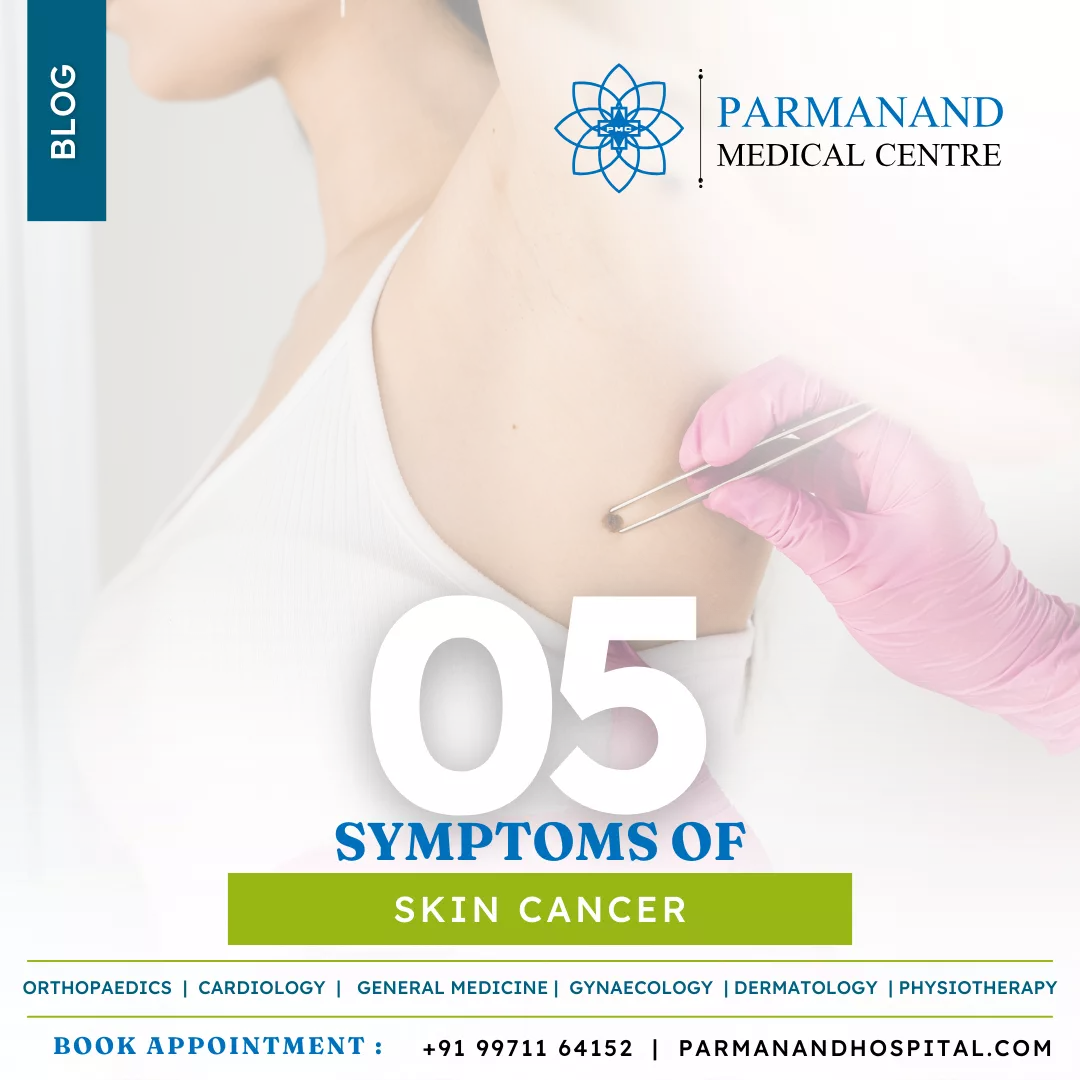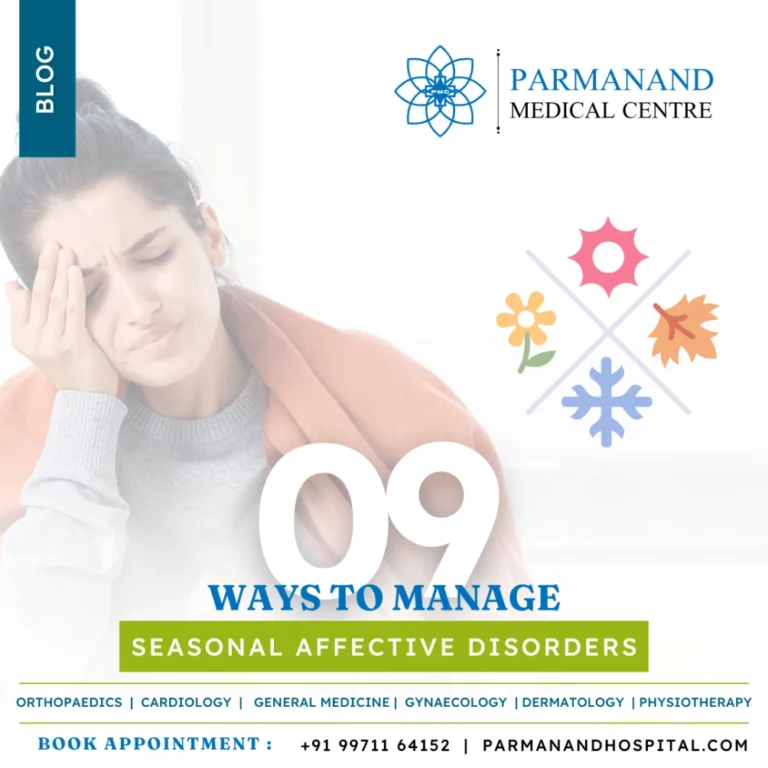Skin cancer can manifest in various ways, and being able to recognize the symptoms is crucial for early detection and treatment. We will discuss the symptoms of skin cancer in this article. Here’s what to look for :
ABCDE of Skin Cancer:
Asymmetry: One side of a mole looks different from the other side.
Borders: Moles or lesions with uneven, notched, blurred, or ragged edges.
Color: Moles can have a variety of colors, including brown, black, tan, white, gray, pink, or blue.
Diameter: Moles that have changed in size or are larger than the size of a pea.
Evolving: Moles that have changed in size, shape, or color recently.

Symptoms of Skin Cancer:
Symptoms of Skin Cancer – #1 Persistent Skin Growths, Scabs, or Sores:
These may not heal or go away, and may even bleed easily.
One of the primary symptoms of skin cancer is the development of persistent skin growths, scabs, or sores that do not heal or resolve on their own. These growths may appear as abnormal patches or lumps on the skin, and they may bleed easily or ooze fluid. Pay attention to any unusual changes in the texture or appearance of these growths, as well as any associated discomfort or tenderness.

Symptoms of Skin Cancer – #2 Changes in Existing Skin Spots:
Keep an eye out for alterations in the shape, color, or size of existing moles or spots.
Another important symptoms of skin cancer to watch for is any changes in existing skin spots or moles. This includes alterations in the size, shape, color, or texture of moles that have been present for some time. Even if a dermatologist has previously examined a mole and deemed it non-cancerous, it’s essential to monitor it for any evolving characteristics, as skin cancer can develop in previously benign spots.

Symptoms of Skin Cancer – #3 Pale or Waxy Patches:
Basal cell carcinomas may appear as pale patches or waxy translucent bumps, sometimes with visible blood vessels.
Certain types of skin cancer, such as basal cell carcinomas, may initially appear as pale or waxy patches on the skin. These patches may have a translucent quality and may feel smooth to the touch. Over time, they may develop into raised bumps or lesions, and they may exhibit visible blood vessels or become crusty or scaly.

Symptoms of Skin Cancer – #4 Scaly Patches:
Squamous cell carcinomas may present as rough, scaly patches on the skin, which may persist or evolve into firm lumps over time.
Squamous cell carcinomas often present as rough, scaly patches on the skin. These patches may feel rough or sandpaper-like and may persist or worsen over time. In some cases, they may evolve into firm lumps or nodules that can be felt beneath the skin’s surface. Pay attention to any changes in the appearance or texture of these patches, as well as any associated itching or discomfort.

Symptoms of Skin Cancer – #5 Red or Flesh-Colored Moles:
Merkel cell carcinomas may look like raised, quickly growing moles that appear red or flesh-colored, often found on sun-exposed areas.
Merkel cell carcinomas may manifest as raised, red, or flesh-colored moles that grow rapidly over a relatively short period. These moles may appear suddenly and may be tender or painful to the touch. They are often found on sun-exposed areas of the skin, such as the face, neck, or scalp, but they can occur anywhere on the body.

Taking Action:
- If you notice any of these symptoms of skin cancer, it’s crucial to take action promptly. Schedule an appointment with a healthcare professional, such as a primary care physician or dermatologist, for a thorough evaluation. Early detection and treatment of skin cancer can significantly improve outcomes and reduce the risk of complications. Remember to conduct regular self-examinations of your skin and seek medical attention if you have any concerns about changes in your skin’s appearance or texture.
Dermatology in Yamuna Vihar, Delhi
Led by Dr. Tasleem Ahmad (M.B.B.S. | M.D. (Skin & VD) | Formerly at Dr. R.M.L. Hospital, New Delhi), our Dermatology Section is your one-stop destination for all of your skin-related problems. Schedule your appointment at Parmanand Medical Centre, Yamuna Vihar now. - White Patches
- Acne or Pimples
- Cosmetic
- Venereal diseases
- Leprosy
- Other Skin-Related Issues
At Dr. Tasleem Ahmad’s dermatology section, we provide a range of services to cater to all your skin-related issues. Our Experienced and highly-qualified dermatologist, Dr. Ahmad, specializes in the diagnosis and treatment of various skin conditions such as white patches, acne or pimples, cosmetic concerns, venereal diseases, leprosy, and other skin-related issues. We believe that every individual deserves healthy and beautiful skin, and we strive to provide personalized care and treatment plans to help our patients achieve their skin goals. With state-of-the-art equipment and the latest techniques, we ensure that our patients receive the best care possible. So, book your appointment today and take the first step towards healthier, happier skin.
If you have any inquiries regarding our physicians or services, please don’t hesitate to reach out to Parmanand Medical Centre. You can contact us by calling (+91) 997-116-4152 or by sending an email to contact@parmanandmedicalcentre.com. Additionally, you can click here to access our location on the map or request an appointment. We extend our best wishes to you and your family for a healthy and joyful time.
Parmanand Medical Centre, under the guidance of Dr. Shekhar Shrivastav – HOD Orthopedics of Sant Parmanand Hospital (Civil Lines, Delhi) is specialized in Orthopedics and also offers its service in the departments of Cardiology, Gynecology, Dermatology, Physiotherapy & Diagnostic Tests.
Connect with us on social media platforms for valuable health tips and general medical knowledge. Follow us on Instagram @parmanandhospital, like our page on Facebook @parmanandhospital, and join us on LinkedIn @parmanandhospital. Stay informed and inspired for a healthier life.




